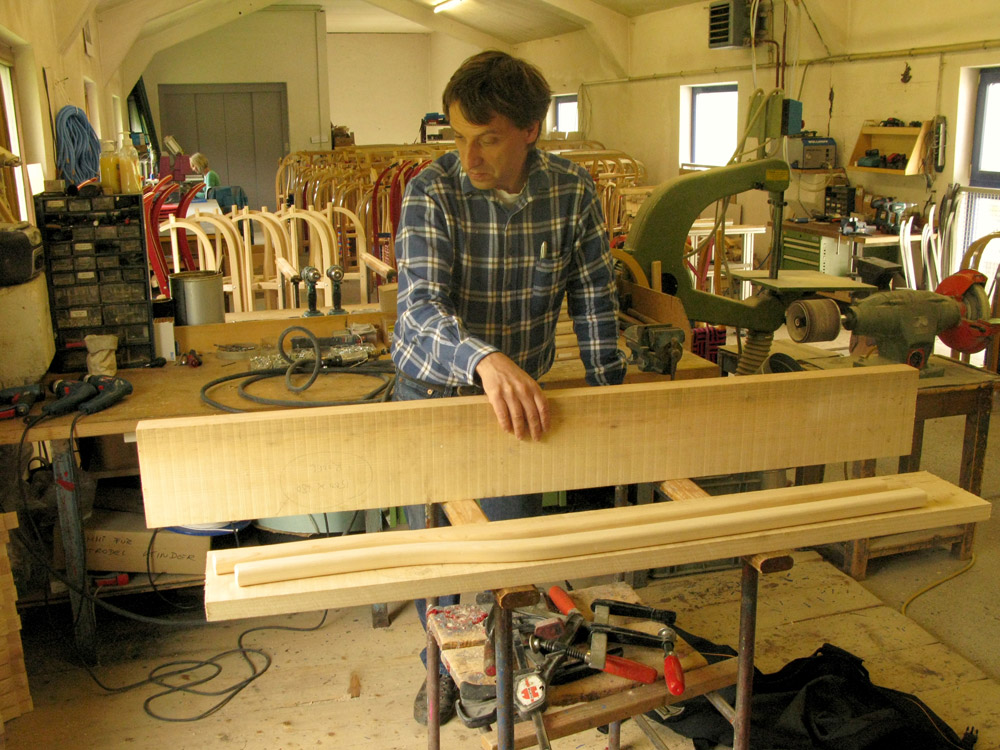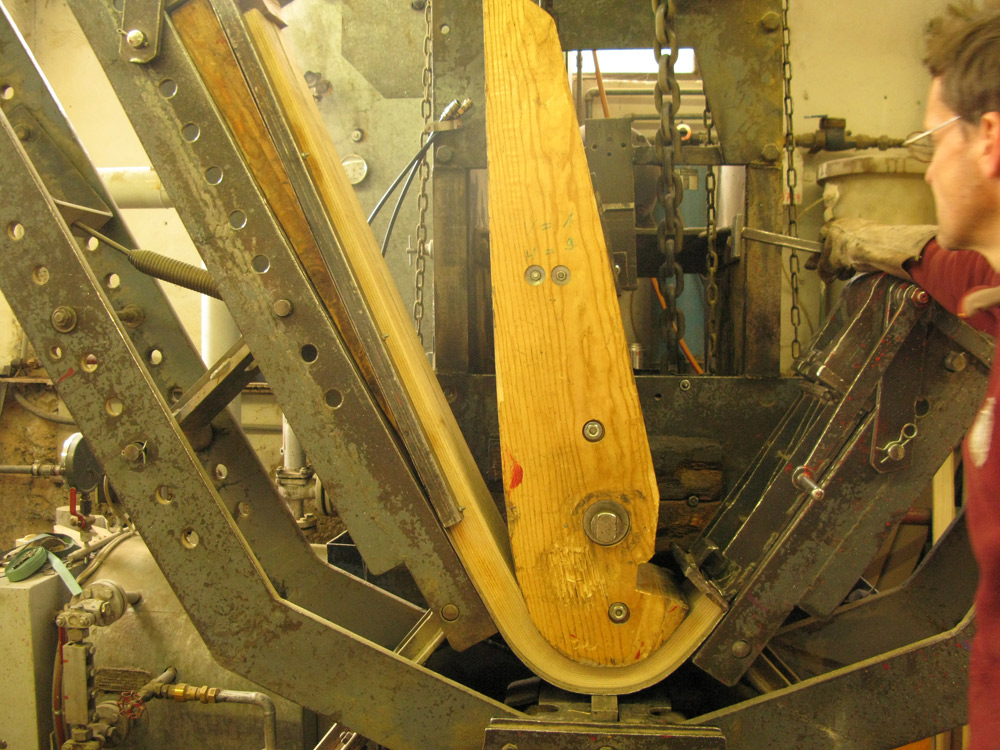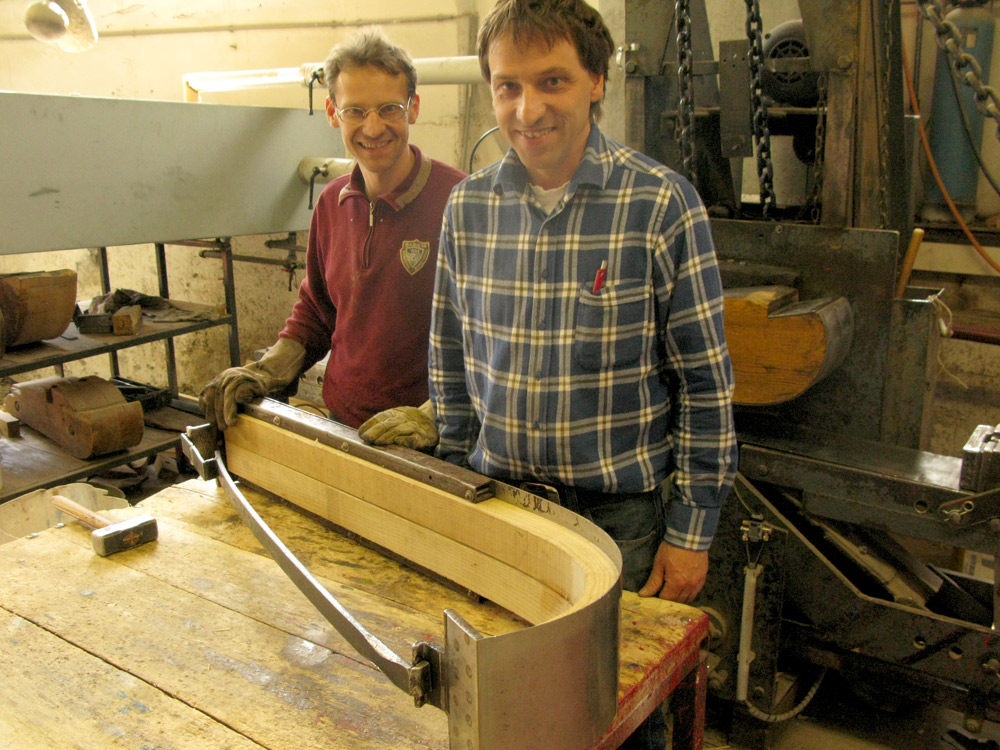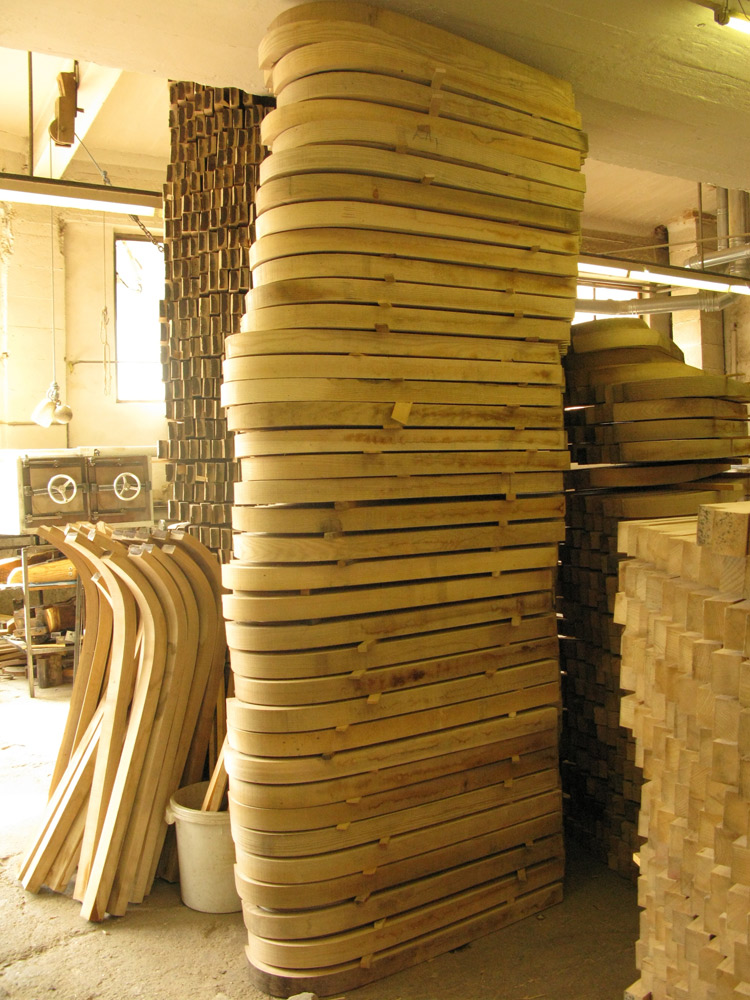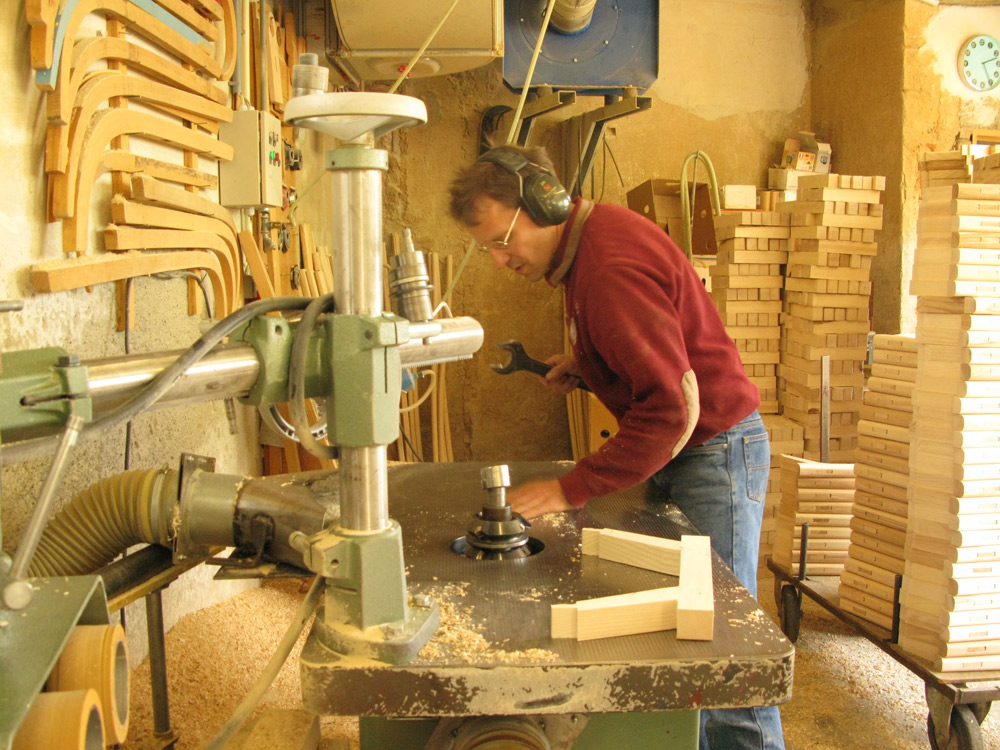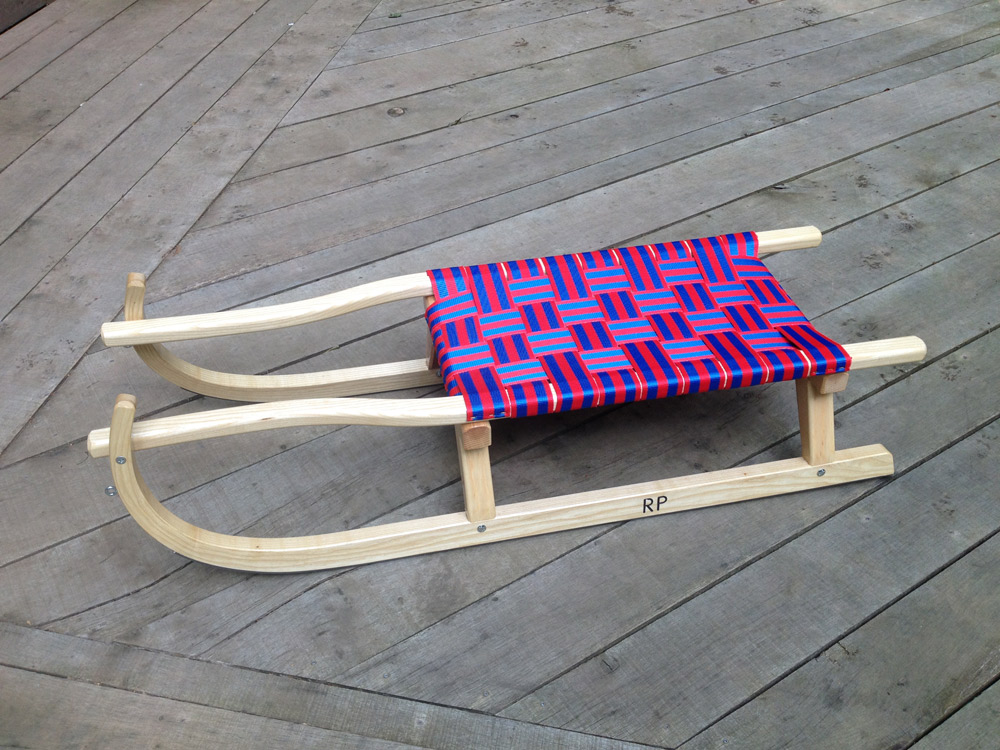Gasser Rodel
I took a piece of my ash tree to Gasser Rodel in Austria, to be made into a toboggan. The following extract is taken from the chapter ‘I See You Baby, Shakin’ That Ash’, from ‘The Man Who Made Things Out of Trees’.
‘We do make sleds and luges for Olympic athletes, and we have customers from all over the world for these, but most of our business is making toboggans for recreation and amateur racing in the Alps. Here in Austria, almost every house will have a toboggan, but they last a long time. We have customers with fifty- year-old toboggans, which they bring back to us for repairs. They are like heirlooms.
‘We do make sleds and luges for Olympic athletes, and we have customers from all over the world for these, but most of our business is making toboggans for recreation and amateur racing in the Alps. Here in Austria, almost every house will have a toboggan, but they last a long time. We have customers with fifty- year-old toboggans, which they bring back to us for repairs. They are like heirlooms.
Our company philosophy has always been to make a quality product at a fair price, and that quality starts with good ash,’ Christian Gasser told me, while making coffee. I had travelled from the UK to Austria on an overnight train, sharing a sleeping carriage from Paris to Munich with five students who had just finished their exams. I needed coffee.
‘We are well known in this business because we have been making toboggans for so long. We are a small company with eight employees, but we are healthy and busy all year round,’ Christian said, pouring the coffee. He was short, sinewy, square-shouldered, strong and full of energy. His youthful eyes never rested.
‘We are well known in this business because we have been making toboggans for so long. We are a small company with eight employees, but we are healthy and busy all year round,’ Christian said, pouring the coffee. He was short, sinewy, square-shouldered, strong and full of energy. His youthful eyes never rested.
Johann Isser, Christian’s great great-uncle set up in business as a wheelwright in 1909 outside the small town of Mattrei, beside the road over the Alps from Innsbruck in Austria to Bolzano in Italy, via the historic Brenner Pass. Repairing the wheels of old wagons and later, the carriages of the first motor vehicles, must have been a good business – at least in summer. In winter, when the pass was often closed due to snow, the young entrepreneur used his expertise with ash to fashion toboggans or sleds. Gasser Rodel (Rodel is German for toboggan) is now run by Christian and his brother, Thomas; their father still comes in to help out and Christian’s wife does the accounts.
There are some fifteen to twenty traditional toboggan manufacturers left across the Alps; some of them comprise just one family; others are bigger than Gasser Rodel, but tobogganing has increased steadily in popularity over the last decade, largely because of the rising cost of skiing, Christian told me. He had laid out a dozen pieces of ash on the table. They included a sawn, oblong billet, a few blocks with holes or mortices cut out and something I had not seen before – two long pieces of wood bent into ‘J’ shapes: they were the runners of a toboggan. The wood was uniformly white. I could immediately see that the grain was straight.
‘If you have grain like this,’ Christian said, ‘all is good. If you have grain that is very close together, that is bad. At least bad for us. We need fast grown, healthy trees to make the best toboggans.’
‘If you have grain like this,’ Christian said, ‘all is good. If you have grain that is very close together, that is bad. At least bad for us. We need fast grown, healthy trees to make the best toboggans.’
Austria has nearly 40 per cent forest cover, slightly above the European average, but most of this forest is in Alpine regions. Common ash is not a major timber species, because it doesn’t grow well in the mountains. In the east of the country, however, around the Danube Valley, ash grows well and is of great socio-economic and ecological importance. Christian buys all his ash in the states of Oberösterreich, Niederösterreich and Burgenland, along the border with Hungary where the Iron Curtain ran during the Cold War.
‘My father used to choose and buy all the trees when they were standing in the forest. Sadly, we don’t have time for this anymore. My brother and I visit the sawmills every year instead, and we select each tree, one by one. We do know all the forests where the trees come from and we like to see every tree in the round. We ask the sawmills to cut them to our dimensions and the timber is transported back here where it is stored outside and undercover, for one year. We never kiln dry our timber because it dries too fast and too much, at least for steam bending. Air-dried timber is much better for us. The quality is very, very important. We are only interested in the highest quality timber,’ Christian said, springing to his feet again and sending the chair skating across the wooden floor.
